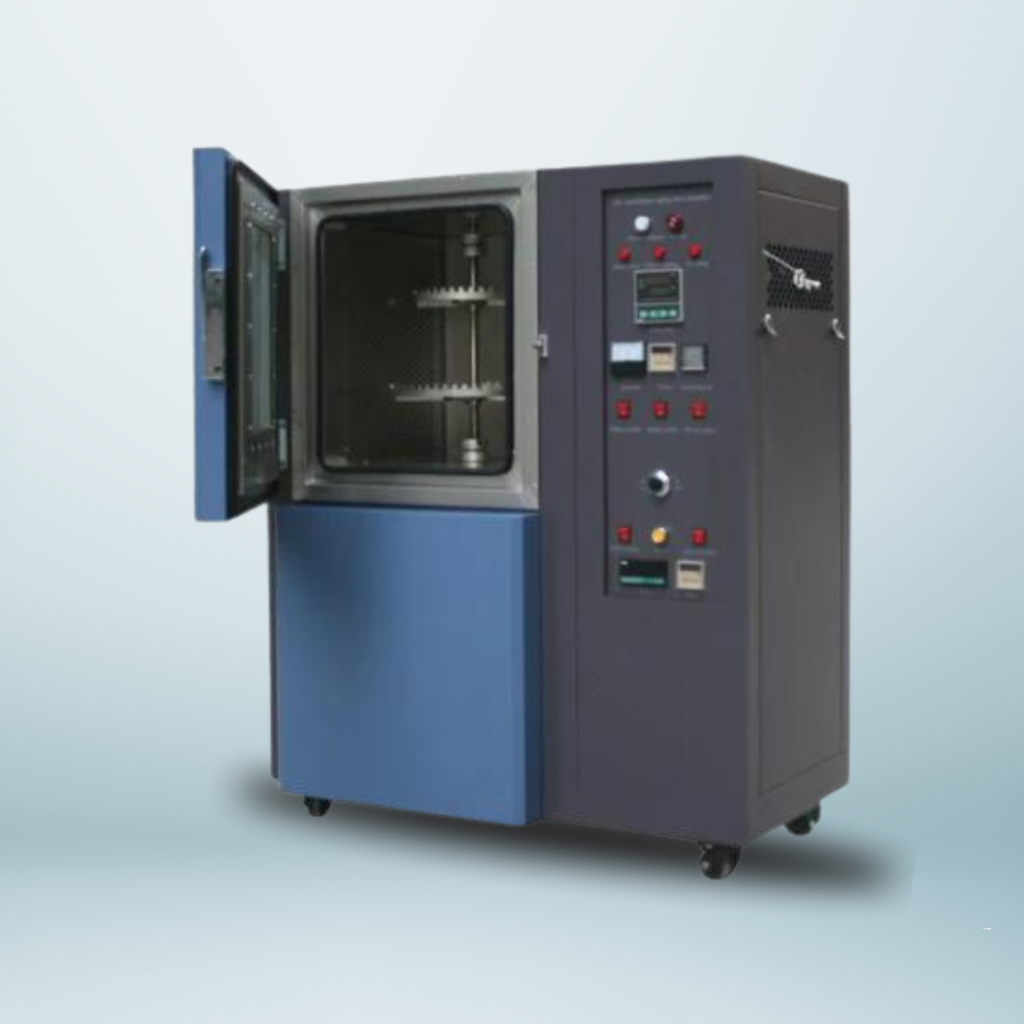Heat Aging Test As Per Standard ASTM D3045
Exploring Heat Aging Tests According to ASTM D3045: Ensuring Plastic Material Durability
Introduction
- Heat aging testing is a crucial aspect of material testing that helps predict the long-term behavior and stability of plastics under elevated temperatures. The ASTM D3045 standard provides a widely accepted method for conducting heat aging tests on plastic materials. This blog post will delve into the details of the ASTM D3045 standard, the procedures involved, the importance of heat aging tests, and their applications in various industries.

Understanding ASTM D3045
ASTM D3045, titled “Standard Practice for Heat Aging of Plastics Without Load,” outlines a method for exposing plastic materials to elevated temperatures to assess their thermal stability over time. This standard is vital for understanding how heat affects the mechanical, physical, and chemical properties of plastics, helping manufacturers and engineers ensure the reliability and safety of their products in real-world applications.
Why Heat Aging Tests are Important
- Predicting Long-Term Performance: Heat aging tests simulate the thermal exposure that plastics might experience throughout their lifespan. By accelerating this exposure, these tests help predict how materials will behave over years or even decades, aiding in product design and material selection.
- Quality Assurance: Heat aging tests are essential for quality control in manufacturing. They ensure that materials maintain their properties under expected service conditions, reducing the risk of product failure and increasing customer satisfaction.
- Safety Compliance: Many industries, such as automotive, aerospace, and electronics, require materials to meet specific safety standards. Heat aging tests provide a method to evaluate whether materials comply with these standards, ensuring that products perform safely under various thermal conditions.
- Research and Development: For material scientists and engineers, understanding the effects of heat on different plastics is crucial for developing new materials with enhanced properties. Heat aging tests provide valuable data that can drive innovation and improve material performance.
The Heat Aging Test Procedure According to ASTM D3045
The ASTM D3045 standard outlines a methodical approach to heat aging testing, ensuring consistency and reliability across different laboratories. Here’s a step-by-step overview of the procedure:
- Sample Preparation: The first step involves preparing test specimens from the plastic material to be evaluated. These specimens are typically cut into specific shapes and sizes to ensure uniform exposure to heat.
- Preconditioning: Before the actual aging process, specimens are preconditioned at standard laboratory conditions. This step helps to stabilize the material and remove any moisture that could affect the results.
- Aging Environment: The specimens are then placed in an oven where they are exposed to elevated temperatures. The temperature settings depend on the material being tested and the specific conditions it is expected to endure in service. Typical temperatures range from 70°C to 150°C, but higher temperatures may be used for certain applications.
- Exposure Time: The duration of heat exposure varies depending on the test’s objectives. It can range from a few hours to several months. The chosen time frame should reflect the intended real-world exposure conditions to provide meaningful data on material performance.
- Post-Aging Testing: After the aging period, specimens are removed from the oven and allowed to cool. They are then subjected to various tests to assess changes in properties. Common tests include tensile strength, elongation, impact resistance, and visual inspection for discoloration or surface degradation.
- Data Analysis: The test results are analyzed to compare the aged specimens’ performance with that of unaged specimens. This analysis helps determine the material’s thermal stability and its suitability for specific applications.
Applications of Heat Aging Test Results
- Automotive Industry: In the automotive sector, plastics are widely used in interior and exterior components. Heat aging tests ensure that these materials can withstand the high temperatures they may encounter, especially in engine compartments or under direct sunlight.
- Electronics: Plastics used in electronic devices and components must maintain their insulating properties and mechanical integrity under prolonged heat exposure. Heat aging tests help verify the durability of these materials in demanding environments.
- Construction: Building materials, such as pipes, insulation, and fittings, often require heat aging tests to ensure they will not degrade or fail over time due to thermal cycling and heat exposure.
- Packaging: Food packaging materials need to resist high temperatures without leaching harmful substances or losing their structural integrity. Heat aging tests ensure the safety and reliability of these materials.

Conclusion
- The ASTM D3045 standard for heat aging tests is an essential tool for evaluating the long-term thermal stability of plastic materials. By simulating prolonged exposure to heat, these tests provide valuable insights into how materials will perform in real-world conditions, helping manufacturers and engineers design safer, more reliable products. Whether you are in the automotive, electronics, construction, or packaging industry, understanding and implementing heat aging tests can significantly enhance the quality and durability of your products.
FAQ
1. How long does a heat aging test last?
The duration of the heat aging test can vary widely, from a few hours to several months, depending on the intended use and the desired simulation of real-world conditions.
2. What properties are evaluated after heat aging?
Common properties tested after heat aging include tensile strength, elongation, impact resistance, hardness, and visual inspection for changes such as discoloration or cracking.
3. How does heat aging testing help in product development?
Heat aging tests provide data on material performance under thermal stress, allowing manufacturers to select suitable materials and optimize formulations for enhanced durability and safety.

